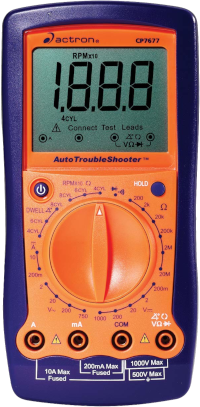A blower motor is a fan that pushes air through the air conditioning vents. Like most motors, the speed it rotates can be controlled by the amount of voltage sent through it, so a blower motor resistor can be used to control the speed.
A blower differs from a normal fan in that the fan blades run parallel to the axis of the motor, instead of extending from the motor shaft.
On equipped vehicles, the blower motor is protected from dust and debris by the Cabin Air Filter.
In order to heat or cool the cabin, a blower motor moves air past the heater core to heat the cabin, or the Evaporator to cool the cabin.
Signs of a Faulty Blower Motor Unit
The easiest to diagnose issue would be one of the selectable speeds not working at all. This would mean that the resistor associated with that speed burned out or otherwise malfunctioned, and will need to be replaced. Sometimes, however, the whole resistor unit can fail and the diagnosis isn't as easy. In this case, testing can be performed to rule out other potential causes, such as a faulty switch, faulty relay, blown fuse, failed blower motor, or a melted electrical connector.
- Check for a fuse and check its condition.
 To test other components, use a multimeter and confirm that the battery has about 12.6 volts. If the vehicle is designed to not allow the blower fan to run unless the engine is running, start the engine and check the battery again to check alternator voltage, which is typically 13.5 to 14.5 volts.
To test other components, use a multimeter and confirm that the battery has about 12.6 volts. If the vehicle is designed to not allow the blower fan to run unless the engine is running, start the engine and check the battery again to check alternator voltage, which is typically 13.5 to 14.5 volts.- Find the plug on the blower motor and disconnect it. Check the connector and the plug for melted plastic and burned terminals. Turn the fan on using the dashboard controls, setting it at full speed.
- If you know which wire is which, test the appropriate wire for voltage by putting the common lead of your multimeter on either the negative post on the battery or a good, reliable ground, and the positive lead on the positive pin/connector on the plug. If you don't know which wire is which, do the same, but test both connections. You should find a reading very close (0.5 volts lower, but it depends on the vehicle) to battery or alternator voltage.
- If a good power reading was found, power is getting to the blower motor connector. Remove the blower motor and inspect it for obvious damage. If damage is found, it is most likely the main issue, and the blower motor chamber should be checked for debris before installing a new motor. Otherwise, clamp the motor and safely provide 12V to the terminals. A good blower motor will spin now, and a faulty one will either do nothing or struggle.
- If both tests have passed, check the other wire on the connector by placing your positive multimeter lead on the battery positive post and the common lead on the second wire in the connector. If this fails, the wiring may be bad.
Testing a Blower Motor Resistor Circuit
Assumptions: Most blower motors have two wires, a positive and negative/ground. If it has more, it is a more advanced design beyond the scope of this test, but it will still be tested in a similar way, you will just need to know which wires are which to prevent causing damage to other components while testing. A multimeter will be required beyond step 1.
What Controls Blower Motor Speed
- Blower Motor Resistors
- Heater Core
- Cabin Air Filter
- Air
- How to Determine What is Leaking From Your Engine
- Steering Wheel
- Wires
